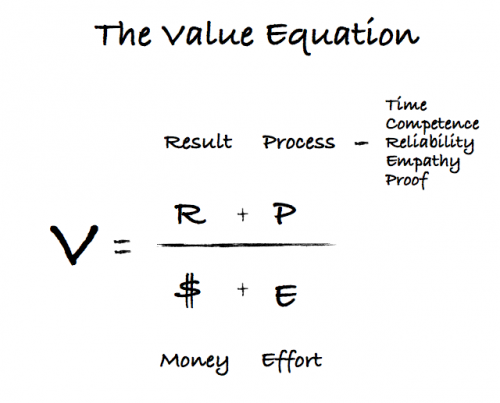Average is over!
The above title is from a recent column in the New York Times by Paul Krugman. In it Krugman makes the point that in the past and average person with an average education could do an average job and earn an average income without too much sweat. But today as digitization, automation and cheap labor is easily accessible to all it takes more than average to make it. This means writes Krugman that everyone needs to find their unique value contribution that makes them stand out in whatever is their field of employment.
If you think about it that’s not just on a personal level. That also applies to any imaginable company, product or service.
No value no business
But how do we actually define value?
Firstly, we must always keep in mind the value can only be understood from the customer perspective – which means it is highly subjective.
Secondly, in all service businesses there is a phenomenon of asymmetry. By which I mean that what the customer actually purchases is not what we sell.
The simple version of this is when you book a hotel room you are in the market for a good nights sleep but what the hotel provides you with is a room and a bed.
If we then look at the research documented in the service profit chain there is a very neat formula for understanding value from the customer perspective called the value equation:
Value equals Result (R) + Process (P) / ($) Price + (E) Effort
The process part can then be broken down further in to 5 components : Time, Reliability, Competency, Empathy and Proof of delivery.
With this little equation we can map any existing or future service experience/product and in the process understand what the value proposition is. And more importantly what can be tweaked in order to increase value.
The most important part is the ‘Result’ part of the equation. As consultants we can be asked to deliver what on the surface essentially seems the same service but actually provides or fulfills different result needs for different clients. (When hiring a consultant clients can be looking for, a solution, reassurance, someone to do the dirty work, an excuse to postpone something etc) so we can only deliver value once we have a very clear understanding of the Result that is to be provided. Once we know that we can tailor the process and the 5 variables that comprise the process in order to maximize the Result part.
The higher the value we provide above the line more room there is for a payment under the line.
The E-part of the equation relates to how much effort the customer needs to put in apart from what they pay for it. Simply put the easier we make their life – the more value they see.
To better understand the equation try for yourself.
If you have the guts map out your own job. If you’re less courageous just try a-product or service that your company delivers
